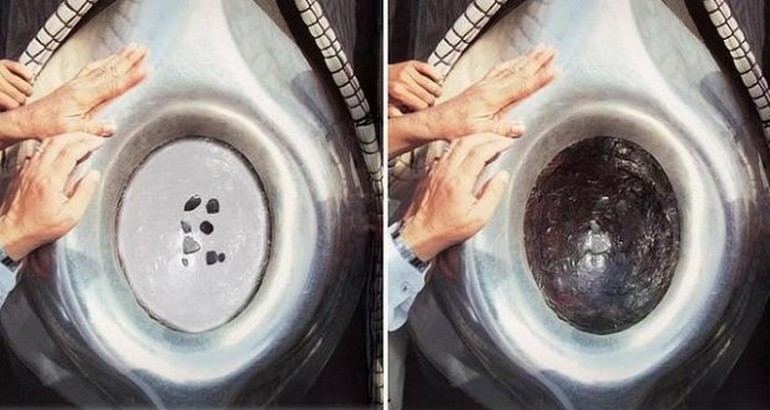The picture above shows Hajjar al-Aswad (Black Stone), which is located in the eastern corner of the Kaaba. Tawaf begins and ends with a face to this sacred stone. Over the centuries, countless people, including many of the Prophets (peace be upon them), the prophet Mohammed himself (seen), the sahabahs (may Allah be pleased with them), pious personalities and millions of Muslims who have performed the hajj and Umrah, have put their blessed lips on it.
Hajjar al-Aswad was brought from Jannah and presented to Ibrahim (peace be upon him) for placement on the corner of the Kaaba. Ibn Abbas (may Allah be pleased with him) said that the Prophet (saw) said: “The black stone came down from paradise, and it was whiter than milk, but the sins of the sons of Adam made it black.” [Tirmidhi]
Douas is accepted at Hajjar al-Aswad, and on the Day of Judgment he will testify in favor of all those who kissed him. The Prophet (saw) said: “Allah! On the Day of Kiyama, Allah will present Hajar al-Aswad in such a way that he will have two eyes and a tongue to testify to Iman (faith) all those who kissed him. ” [Tirmidhi]
READ MORE: 5 Common Mistakes We Make During Jummah Prayers
When the Quraysh destroyed the sacred Kaaba in order to restore it, a dispute arose when the building reached the level of the Black Stone. They disagreed on the question of who has the right to restore the Black Stone in its original place. The civil war was about to begin. Banu Abdu’d-Dar brought a cup full of blood, and all the tribes put their hands in it, which meant they decided to fight each other. But Abu Umayah ibn al-Mugira, their senior, asked the Quraysh to agree with the decision of the first man who will pass through the gate of Bani Shayba, and they all agreed with this proposal. The first who passed through this gate was the Prophet (saw). It was five years before his mission. He put the Black Stone in the middle of a piece of cloth and asked a representative of each tribe to take one of the edges of the cloth and lift it closer to the spot. Then the Prophet (saw) raised him with his noble hands and returned to its original place. That is how the Prophet (I saw) prevented the start of the war among the Quraysh through the highest demonstration of wisdom.
READ MORE: 6 things you didn’t know about Jesus in Islam
Ibn Abbas (may Allah be pleased with him) says that the Prophet (saw), leaning on the Kaaba, said: “Hajar al-Aswad and al-Maqam (Ebrahim) are two jewels of Paradise precious stones. If Allah would not hide their radiance, they would illuminate everything between the East and the West. ” [Tirmidhi]

Umar (may Allah be pleased with him) once kissed Hajjar al-Aswad and said: “I know well that you are just a stone that cannot do good or harm. If I had not seen the Prophet (see) kiss you, I would not do that. ” Umar (may Allah be pleased with him) made a statement because there were many people who recently converted to Islam, and he did not want them. It seems that Muslims also worshiped stones, as the Arabs worshiped and worshiped stone idols in the period of ignorance. Umar (may Allah be pleased with him) made it clear that he followed the Sunni practice of the Prophet (I saw) and that, although the stone is blessed, it can do neither harm nor good.
READ MORE: 8 Ideas for Little Children Left at Home while Mother Performs Hajj
Hajar al-Aswad was stolen from the Kaaba around 930 CE. by Warriors of the Qarmatian, who were the sect of Ismaeeli Shiites. They plundered Mecca, desecrated the Zamzam Well with Muslim corpses and took the Black Stone to its base in Ihsaa, in medieval Bahrain. According to the historian Al Juvini, the stone was returned around 952 and restored to its original location.
Hajar al-Aswad was originally a complete stone, but due to various historical incidents now consists of eight parts of different sizes, attached to a large stone and enclosed in a silver frame. The silver frame was first made by Abdullah bin Zubayr (may Allah be pleased with him) and replaced by the late Caliphs as necessary.
READ MORE: The Day Of Arafat And It’s Messages By Prophet Muhammad
It is alleged that six (additional) pieces are located in Istanbul, Turkey. One is depicted in the mihrab of the Blue Mosque, one above the entrance to the tomb of Suleiman the Magnificent, and four – at the Sokullu Sekhit Mehmet Pasha Kamiya mosque (one above the mihrab, one under the lower pulpit, the other above the upper pulpit) and the last behind the entrance door). The authenticity of these additional works was called into question, although the Turks ruled the territory of modern Saudi Arabia for many years and keep many historical Islamic relics. And Allah knows best.
READ MORE: Common Mistakes While Staying in Mount Arafat During Hajj
Please note that kissing Hajjar al-Aswad should neither push people nor harm anyone, because kissing Hajar al-Aswad, this is Sunnah, hurting people is a prohibited act (haram). When the area is full, it will be enough just to point to Hajjar al-Aswad with a hand or a stick while reading Takbir, and then kiss a hand or a stick. Although the Prophet (saw) kissed Hadjar al-Aswad directly, he also pointed to him when there were many people in the area, so it is clear that a kiss and an indication of him are Sunnah.
Source: The History of Makkah Mukarramah– Dr Muhammad Ilyas Abdul Ghani, Holy Makkah – Shaikh Safiur-Rahman Mubarakpuri, Wikipedia





